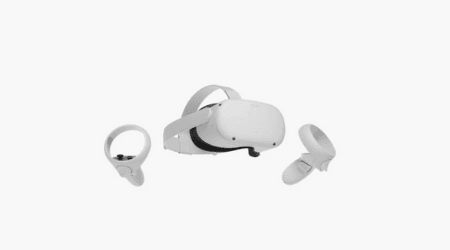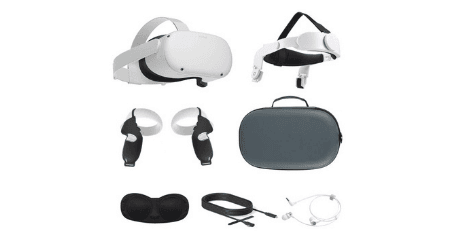Disclaimer: This page is not financial advice or an endorsement of digital assets, providers or services. Digital assets are volatile and risky, and past performance is no guarantee of future results. Potential regulations or policies can affect their availability and services provided. Talk with a financial professional before making a decision. Finder or the author may own cryptocurrency discussed on this page.
Virtual reality (VR) and augmented reality (AR) sound like the same thing, but they require different technology and have different capabilities and applications.
What is VR?
Virtual reality (VR) is a computer-generated fictional world, like a video game or metaverse, where users can interact with the environment around them. It can be immersive, thanks to VR gear that enhances the experience.
VR gear can include:
- Headsets
- Motion controllers
- Treadmills
- Haptic vests
- Haptic gloves
Shop VR gear
The VR rhythm game Beat Saber is a great example of gaming meets VR. It’s like Guitar Hero or Rock Band but with lightsabers. It’s set in a neon environment where players hold two lightsabers using motion controllers that slash incoming blocks that are mapped to songs.
There are also metaverse VR games that don’t have a specific objective and are geared toward world-building, socializing and property ownership, like Roblox and Spatial. Metaverse games can let players create their own avatar, decorate virtual spaces with nonfungible tokens (NFTs) and even buy virtual real estate to host events or build games.
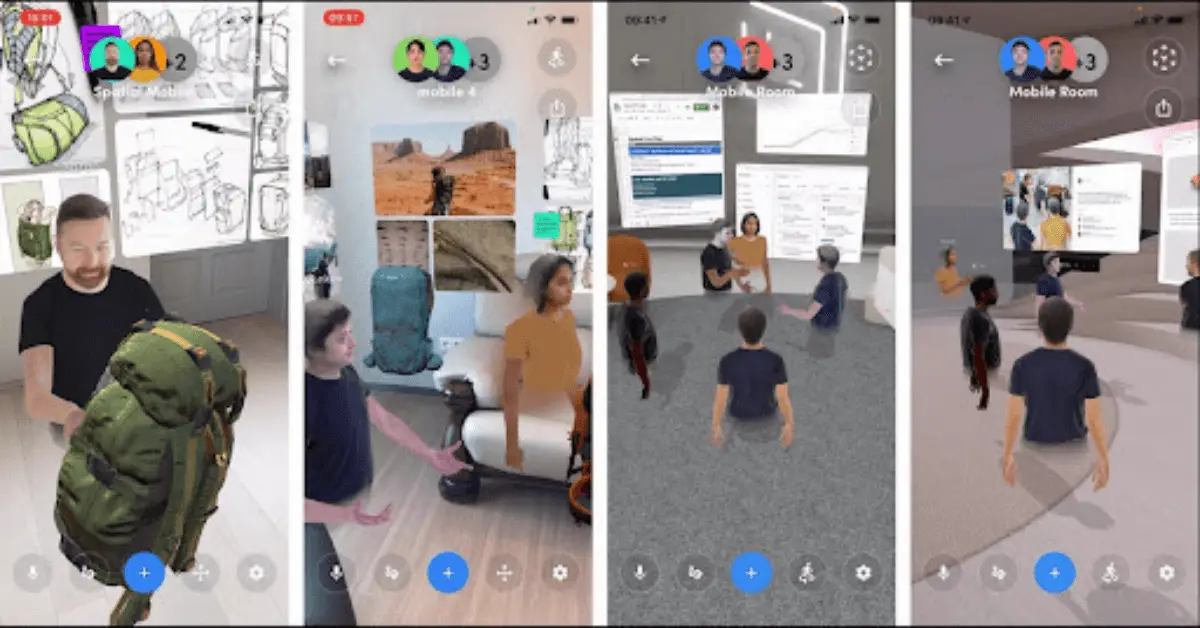
Image source: Spatial.io
A virtual reality environment that’s fully immersive would require the integration of all five senses. However, we’re limited to touch and vision at the moment — you can’t yet smell or taste anything in your virtual environment.
Current VR tech is limited, so it’s considered semi-immersive.
What is AR?
AR stands for augmented reality. It’s a sort of blend between the real world and a virtual one. AR enhances our real-world setting by overlaying information.
A great example of an AR game is Pokémon GO. With the game open on a mobile device, the camera is used to “see” Pokémon in the real world. The in-game map copies the player’s actual geographical location, so they had to move to specific physical locations to play parts of the game. For example, a gas station around the corner may have a PokéStop, where players could collect items.
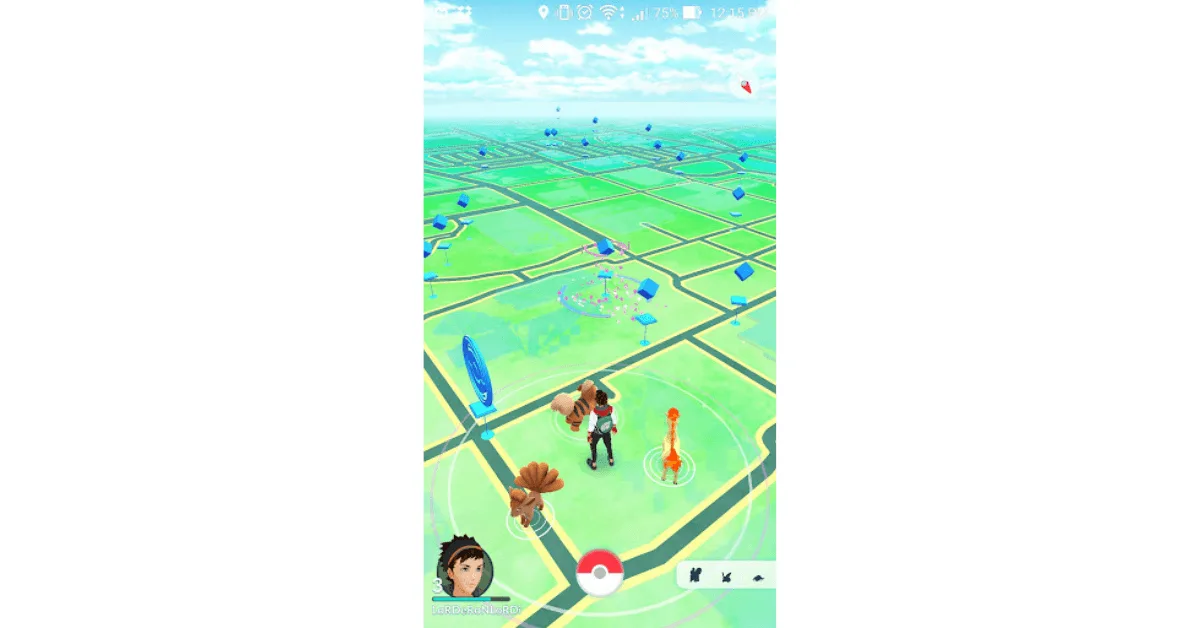
Image source: Pokémon GO, ResearchGate.net
There are also AR apps outside of gaming, like a stargazer app that lets you hold up your smart device to the sky to view constellations or identify stars, planets and satellites.
Filters, like on Snapchat, TikTok and Instagram, are also under the AR umbrella. These programs map your face and superimpose features to it, like dog ears, different facial characteristics or animations. Or a piece of bread.

Image source: @benzosnapchats
When you’re navigating with a map app on your phone, you’re also using AR technology.
Using an AR game or app requires little to no gear compared to VR games. In most cases, your phone and the AR application is all you need. However, some apps have smartglasses capabilities that display information on the lens, like incoming messages, calls, reminders, videos or images.
VR vs. AR: The differences
VR games are much more immersive than AR games. You use your body to play the game, with the help of motion controllers, VR headsets to see and look around and maybe even haptic vests that let you “feel” stimuli in-game.
In an AR application, you’re not transported to another environment. Instead, the fictional environment or digital bits are built on top of our current reality.
In terms of cost, VR applications and setup are much more expensive. Buying just a headset and controller combo could cost you anywhere from $300 to $600 or more, depending on the model or if it’s an addition to your existing console.
A Playstation VR bundle, excluding the console, retails for $349.99. The Oculus Quest 2 — a standalone device — starts at $299 as of March 2022. There are also VR setups that require a computer, like the Valve Index by Steam, that starts at $999.
Many AR apps and games are free to download and may only require your phone, whereas VR games typically only require your phone and its camera. Smartglasses are another story, though, and they can retail anywhere from $60 to $3,000, depending on the model and its functionality.
VR vs. AR: Snapshot comparison
| Augmented reality | Virtual reality | |
| Devices required | Mobile device or smartglassses | Headsets and controllers, console. Optional gear includes haptic wearables and treadmills. |
| Level of immersion | Nonimmersive or semi-immersive | Semi-immersive |
| Cost | Excluding mobile device cost, often free to download and use recreational applications | Starts at $300 for gear. VR games and apps may be around $60, depending on the platform. |
| Uses | Games, educational materials, filters, accessibility, design, entertainment and more. | Games, educational materials, design, entertainment, chat, world-building, metaverse interaction and more. |
VR vs. AR on application
New applications for both AR and VR are in development all the time.
An AR app can be great for educational materials, such as medical training, design, art and gaming. Use a device’s camera for a view you normally wouldn’t be able to see — whether it’s fictional or reality-based.
Virtual reality right now is more tailored to recreational applications such as gaming, social spaces or the metaverse. Headsets can have microphones built in, wearable gear can let you move your character’s arm by moving your actual arm and haptic wearables can even simulate getting hit by an enemy in a game.
Can VR and AR be used together?
Combining VR and AR is called mixed reality. It’s exactly what it sounds like — using AR and VR tech together to interact with a virtual environment that’s built on top of our current reality. It lets you interact with physical and virtual items together.
Combining VR and AR can involve wearing a headset that adds images to your current environment or a simulation game that’s projected and mapped to your kitchen table.
Microsoft created the HoloLens, advertised as “An ergonomic, untethered self-contained holographic device.” That’s a mouthful.
HoloLens is considered a mixed-reality device. This device lets you connect with clients and coworkers remotely and even create hands-on education materials.
The different sector applications Microsoft advertises include:
- Manufacturing
- Engineering
- Healthcare
- Education
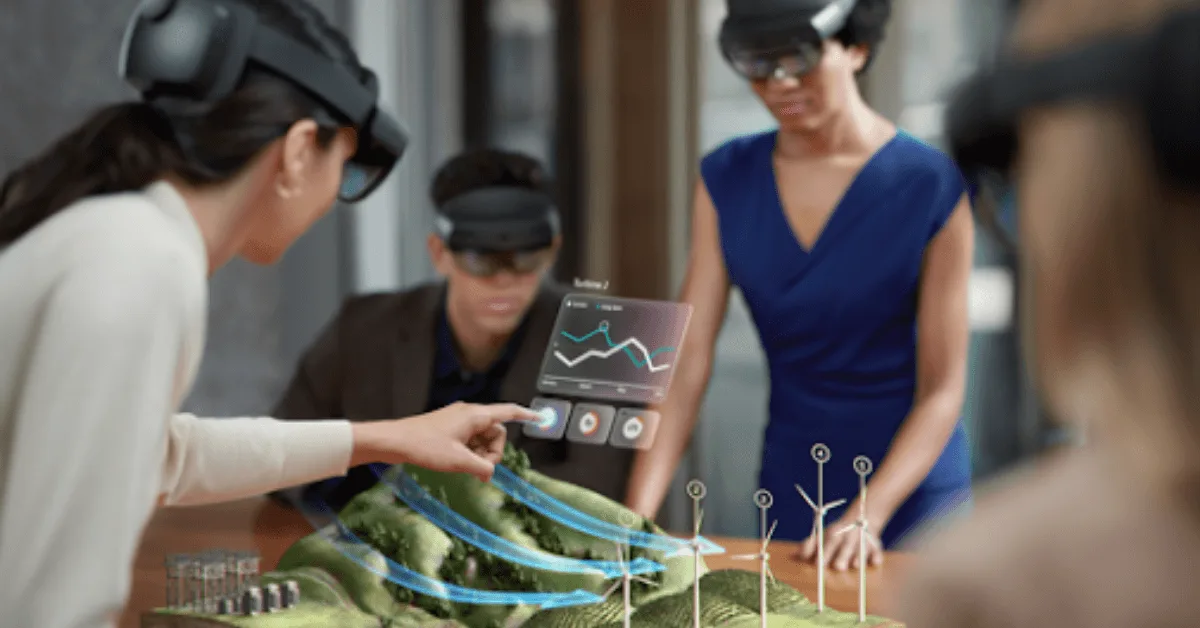
Image source: Microsoft
Bottom line
Virtual realities by themselves are nothing new. Video games are technically VR — but now, the term is referring to VR gear that transports you to an immersive environment that you can interact with directly. VR gear can be used to enter the metaverse and feel like you’re “really” there. However, it isn’t cheap.
AR tech has also been around for a while, and you’ve likely already interacted with AR technology without even realizing it. New-use applications are continuously being created: filters, navigation, learning materials — the applications are nearly endless. And in terms of cost, it’s becoming easier to get involved with these applications.
Compare marketplaces to buy NFTs
Are you visiting from outside the US?
Whether products shown are available to you is subject to individual provider sole approval and discretion in accordance with the eligibility criteria and T&Cs on the provider website.
Ask a question
More guides on Finder
-
Top 29 NFT and cryptocurrency influencers in 2022
Check out the top tastemakers for crypto, NFTs, DeFi, Bitcoin and blockchain technology, from NYT experts to published authors and YouTubers.
-
Finder Awards 2022: NFT marketplaces
We compared over 30 NFT marketplaces to award the top platforms of 2022.
-
NFT vs. Crypto
Crypto and NFTs are far from the same thing – learn the differences.
-
Town Star review: An addictive P2E NFT farming simulation
In this Town Star guide you’ll learn how Gala Games’ free-to-play NFT farming simulator with P2E potential puts fun first.
-
NFT trading cards: What they are and how they work
Explore the world of NFT trading cards
-
My DeFi Pet game guide
My DeFi Pet is a blockchain game with many ways to interact with your NFT pets.
-
NFT statistics
The definitive ranking of the NFT adoption across 26 countries.
-
Crypto.com NFT marketplace review
Trade, mint and collect with Crypto.com’s NFT marketplace.
-
eBay NFTs review and guide
A deep dive into eBay’s foray into the NFT ecosystem, looking at everything from available categories to potential drawbacks.

